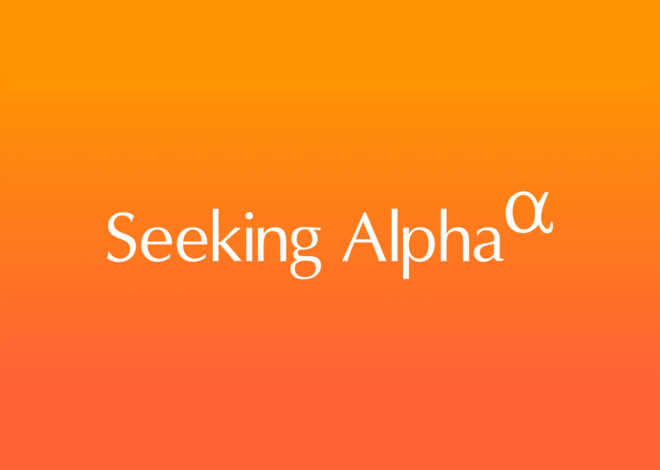
Wall Street Lunch: Generative AI Powers October E-Commerce Spending (undefined:ADBE)
showcake/iStock via Getty Images
Listen below or on the go on Apple Podcasts and Spotify
AI shopping referrals surge 1,200% in October. (0:15). Health insurers tumble on Trump healthcare posts. (1:40) Will your parked car soon be powering AI? (2:41)
This is an abridged transcript of the podcast:
Our top story so far, Adobe (ADBE) says U.S. online spending rose 8.2% year-over-year in October to $88.7 billion.
Adobe also noted that generative-AI-driven traffic is rising sharply — and converting better. In October, visits from AI-referral sources surged 1,200% year-over-year. Those shoppers were 16% more likely to make a purchase and showed 31% lower bounce rates, exploring more content and spending more time on retail sites.
Mobile purchases made up 51.4% of that total, climbing 11.6% from a year ago, while Buy Now, Pay Later transactions hit $7.1 billion, up 7.6%, as consumers looked for more flexible ways to manage budgets.
Spending spiked during the Amazon (AMZN) Prime Day event on October 7-8, with discounts stretching across major U.S. retailers. Shoppers spent $9.1 billion over the two days, helped by markdowns that peaked at 18% off listed prices.
Holiday décor led the way with online sales jumping 130%, followed by home-improvement categories — hand tools up 83% and power tools 62% — signaling a DIY rebound that could benefit Home Depot (HD) and Lowe’s (LOW).
Appliance demand was also strong, with refrigerators and freezers up 55%, a boost for Whirlpool (WHR) and Best Buy (BBY). Other fast-growing categories included e-readers (+81%), headphones and speakers (+52%), phone accessories (+51%), and video games (+41%).
Among active stocks, health insurers with significant operations in Obamacare marketplace businesses are among the biggest losers. President Donald Trump said federal funding should be sent directly to people, bypassing “BIG, BAD” and “money sucking” insurance companies.
Centene (CNC), Oscar Health (OSCR), Elevance Health (ELV) and Molina Healthcare (MOH) are slumping. Major managed care organizations like UnitedHealth (UNH), Humana (HUM) and CVS Health (CVS) are also in the red.
Eli Lilly (LLY) is up after Leerink Partners upgraded shares to Outperform from Market Perform, arguing that its recent pricing deal with the White House will significantly expand coverage for its obesity drugs.
Monday.com (MNDY) is tumbling after fiscal Q4 revenue outlook came in below estimates.
Pagaya Technolgoies (PGY) stock is surging as the AI infrastructure provider for the financial ecosystem raised its full-year adjusted EBITDA guidance after posting 91% year-over-year growth in Q3.
And Papa John’s (PZZA) is active on a report that TriArtisan Capital, which recently agreed to buy Denny’s, is close to buying the pizza chain. But a source told Seeking Alpha the report is not true, and shares are off their earlier highs.
In other news of note, Tesla (TSLA) CEO Elon Musk has a new idea to make your car work for you.
At the annual meeting, Musk floated a plan to pay customers $100 to $200 a month if they let the company use their parked vehicles for AI inference workloads — when they’re not driving.
Morgan Stanley’s Adam Jonas did the math.
He points out there are more than 300 million light vehicles on U.S. roads and about 1.2 billion worldwide. If every one of them had the power of a single Nvidia Blackwell GPU — that’s about 9,000 trillion operations per second — the numbers get staggering fast: 300 million Blackwells in the U.S., 1.2 billion globally, and potentially 2 billion within 15 years.
And that’s before you add what Jonas calls “the rest of the fleet” — humanoid robots, eVTOLs, drones, construction and manufacturing bots, even surgical robots.
He says it’s not a stretch to imagine a world with tens of billions of Blackwell-class computers at the edge — each one humming away with its own cooling system, data sensors and AI jobs to do.
And in the Wall Street Research Corner, investors should consider shorting bonds of hyperscalers, but hold off on major shorts of the broader AI trade, according to BofA.
Strategist Michael Hartnett says hyperscaler cash flow is no longer sufficient for Amazon (AMZN), Alphabet (GOOG) (GOOGL), Meta (META), Microsoft (MSFT) and Oracle (ORCL) to sustain the ongoing “AI capex arms race.”
He pointed out that more than $120 billion in bonds have been issued over the past seven weeks and that even the “AI kings” are hinting at the need for a government backstop to help lower funding costs. Hyperscaler credit spreads have widened from 50 basis points in September toward 80 basis points, suggesting the lows are in, Hartnett said, adding that U.S. tech bond prices fell 8% in the 12 months leading up to the March 2000 bubble peak.
For AI, he said markets are already flashing plenty of “watch out” signs —but real “get out” signals always come from rising rates — and for now, “the Fed ain’t hiking, and yields ain’t spiking.”
Editor’s Note: This article covers one or more microcap stocks. Please be aware of the risks associated with these stocks.


